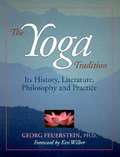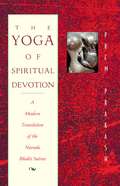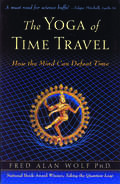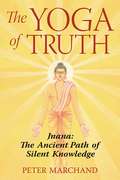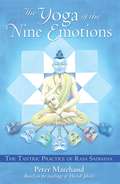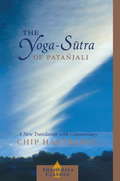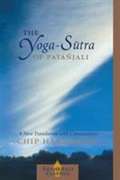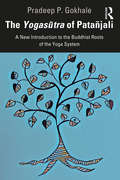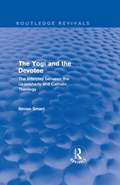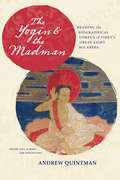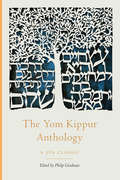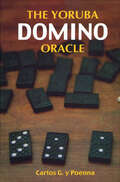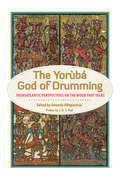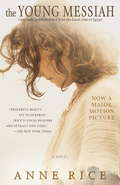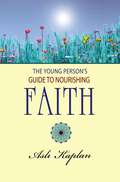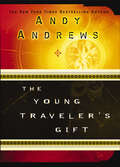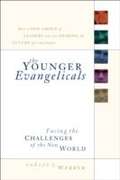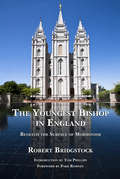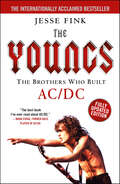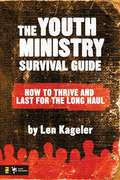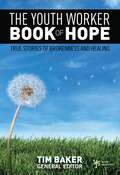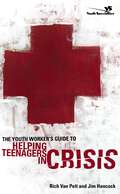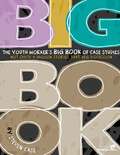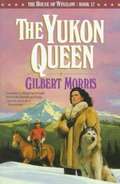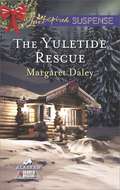- Table View
- List View
The Yoga Tradition: Its History, Literature, Philosophy and Practice
by Georg FeuersteinThe author is founder-director of the Yoga Research Center in Northern California and the author of 30 books on yoga. The present volume is a revised and greatly enlarged edition of the author's 1989 work, Yoga: The Technology of Ecstasy .
The Yoga of Spiritual Devotion: A Modern Translation of the Narada Bhakti Sutras
by Prem Prakash• The first translation of this great but little-known path of spiritual devotion written for the modern Western audience. • An insightful commentary aimed at making the path of love immediately accessible to Westerners. • A life-affirming and relationship-positive path of yoga. • Written in the spirit of the kirtans (ecstatic songs and dances) of Narada, sensitively translated by Prem Prakash. Bhakti Yoga, the path of devotion, is considered one of the primary paths for spiritual realization in yogic tradition. Its representative, Narada, is the embodiment of the enlightened sage who travels the universe spreading his sacred teachings. Unlike Jnana Yoga, the Yoga of Wisdom, the bhakti acolyte does not discriminate against material phenomena--for him, all phenomena are aspects of God. Within the context of Ananda, blissful love, the temporal is realized as the reflection of the eternal, and the soul is realized as the expression of God.
The Yoga of Time Travel
by Ph.D. Fred Alan WolfBuddha said he could move backward through time, observes theoretical physicist Fred Alan Wolf. Time travel is not just science fiction; it may actually be possible. Wolf draws on yoga and quantum physics to show that time is a flexible projection of mind. Cheating time, he says, is an ancient metaphysical idea from the Vedas having to do with moving through meditation to a place where time stands still.In reader-friendly language, Wolf explores how time and thought are bound together and how a change in ego structure could allow freedom from time's limitations. And he elaborates on benefits: Time travel, he asserts, could clarify our purpose; change our sense of self, the future, and death; and provide a hero's journey that might aid the entire community. Fascinatingly, Wolf thinks that, under certain circumstances, we might not only visit but even alter the past, with a ripple effect on the present.
The Yoga of Truth: The Ancient Path of Silent Knowledge
by Peter MarchandA guide to Jnana Yoga--the Way of Silent Knowledge--by direct contemplation of the Unchangeable • Shows that everything in one’s body, personality, thoughts, memories, and experiences has form and is changeable and, thus, is neither essential nor eternal • Identifies the witnessing consciousness within--all that remains when the ephemeral is eliminated--as the real Self, the one and only unchanging eternal Being In The Yoga of Truth, Peter Marchand, through a series of deceptively simple introspective questions, leads the seeker into discarding everything--body, personality, thoughts, memories, experiences--that disguises the ego’s relentless masquerade as the Self. This form of contemplation, with its constant commitment to witnessing without attachment, disempowers the ego’s fixation on its products, leading instead to the realization that the witnessing consciousness is, in fact, the one immutable Being within or without--the real Self, the true You. The universal illusion rests upon space and time, body and elements, the life force, mind, intellect, ego, and Self. Jnana Yoga reveals not only the insubstantial and illusory nature of our presumptions but also our habitual commitment to the illusion of being an individual that they create. This illusion collapses like a house of cards before direct inspection. When something has form, when it can change, it cannot be the eternal with which we seek union. Witnessing consciousness stands alone as that which is without form. In The Yoga of Truth, Marchand leads us simply, and compellingly, to the truth of our nature and the peaceful bliss of true Being.
The Yoga of the Nine Emotions: The Tantric Practice of Rasa Sadhana
by Peter MarchandA guide to changing negative emotions and promoting happiness using traditional Tantric and Ayurvedic practices• Details the 9 Rasas that represent our basic emotions• Offers emotional fasting exercises and daily routines for emotional well-being• Shows how Rasa Sadhana can be integrated with other yoga practices• Based on the teachings of Harish JohariRasas are the essence of our emotions that exist in both the body and the mind. The Tantric tradition recognizes 9 Rasas that represent our basic emotions: love, humor, wonder, courage, calmness, anger, sadness, fear, and disgust. Those who practice Rasa Sadhana learn to overcome negative emotions in order to pursue better health, enhanced spiritual growth, and enduring happiness.Our emotions are continuously affected by the interplay of our senses, the elements, food, and the life force in our body. In The Yoga of the Nine Emotions, Peter Marchand offers many practical physiological and philosophical tools from Tantric and Ayurvedic traditions that can help readers change their emotional patterns. He explains the nature and purpose of each Rasa and how we can strengthen or weaken one Rasa through another. He also offers Ayurvedic cooking guidelines and daily routines for balancing sensory input and strengthening emotional health, including fasting from negative emotions as well as how to energize positive ones. As we master our emotions through the practice of Rasa Sadhana, we gain true control of our lives and our relationships with others.
The Yoga-Sutra of Patanjali: A New Translation with Commentary
by Chip HartranftIn just 196 short aphorisms, this classic work of Indian philosophy spells out succinctly how the mind works, and how it is possible to use the mind to attain liberation. Compiled in the second or third century CE, the Yoga-Sutra is a road map of human consciousness--and a particularly helpful guide to the mind states one encounters in meditation, yoga, and other spiritual practices. It expresses the truths of the human condition with great eloquence: how we know what we know, why we suffer, and how we can discover the way out of suffering. Chip Hartranft's fresh translation and extensive, lucid commentary bring the text beautifully to life. He also provides useful auxiliary materials, including an afterword on the legacy of the Yoga-Sutra and its relevance for us today.
The Yoga-sutra of Patañjali: A New Translation with Commentary
by Chip Hartranft PatañjaliIn just 196 short aphorisms, this classic work of Indian philosophy spells out succinctly how the mind works, and how it is possible to use the mind to attain liberation. Compiled in the second or third century CE, the Yoga-Sutra is a road map of human consciousness--and a particularly helpful guide to the mind states one encounters in meditation, yoga, and other spiritual practices. It expresses the truths of the human condition with great eloquence: how we know what we know, why we suffer, and how we can discover the way out of suffering. Chip Hartranft's fresh translation and extensive, lucid commentary bring the text beautifully to life. He also provides useful auxiliary materials, including an afterword on the legacy of the Yoga-Sutra and its relevance for us today.
The Yogasūtra of Patañjali: A New Introduction to the Buddhist Roots of the Yoga System
by Pradeep P. GokhaleThis book offers a systematic and radical introduction to the Buddhist roots of Pātañjala-yoga, or the Yoga system of Patañjali. By examining each of 195 aphorisms (sūtras) of the Yogasūtra and discussing the Yogabhāṣya, it shows that traditional and popular views on Pātañjala-yoga obscure its true nature. The book argues that Patañjali’s Yoga contains elements rooted in both orthodox and heterodox philosophical traditions, including Sāṅkhya, Jaina and Buddhist thought. With a fresh translation and a detailed commentary on the Yogasūtra, the author unearths how several of the terms, concepts and doctrines in Patañjali’s Yoga can be traced to Buddhism, particularly the Abhidharma Buddhism of Vasubandhu and the early Yogācāra of Asaṅga. The work presents the Yogasūtra of Patañjali as a synthesis of two perspectives: the metaphysical perspective of Sāṅkhya and the empirical–psychological perspective of Buddhism. Based on a holistic understanding of Yoga, the study explores key themes of the text, such as meditative absorption, means, supernormal powers, isolation, Buddhist conceptions of meditation and the interplay between Sāṅkhya and Buddhist approaches to suffering and emancipation. It further highlights several new findings and clarifications on textual interpretation and discrepancies. An important intervention in Indian and Buddhist philosophy, this book opens up a new way of looking at the Yoga of Patañjali in the light of Buddhism beyond standard approaches and will greatly interest scholars and researchers of Buddhist studies, Yoga studies, Indian philosophy, philosophy in general, literature, religion and comparative studies, Indian and South Asian Studies and the history of ideas.
The Yogi and the Devotee: The Interplay Between the Upanishads and Catholic Theology (Routledge Revivals)
by Ninian SmartFirst published in 1968, Ninian Smart’s The Yogi and the Devotee: The Interplay Between the Upanishads and Catholic Theology is based on lectures given in Delhi and explores in a novel way the relation between Hinduism and Christianity. The author puts forward a general theory of the relationship between religious experience and doctrines, a theory he had developed in earlier works. He argues that a new form of ‘natural theology’ should be presented, which would show the relevance of religious experience and ritual to what is given in revelation. Smart believes this could be the key to a new understanding between Christianity and Indian religions, and also examines what Christians can learn from other faiths. During a career as a Professor of Religious Studies and Philosophy, Ninian Smart was hugely influential in the way Religious Studies was taught, not only in Britain but around the world.
The Yogin and the Madman: Reading the Biographical Corpus of Tibet's Great Saint Milarepa (South Asia Across the Disciplines)
by Andrew QuintmanTibetan biographers began writing Jetsun Milarepa's (1052–1135) life story shortly after his death, initiating a literary tradition that turned the poet and saint into a model of virtuosic Buddhist practice throughout the Himalayan world. Andrew Quintman traces this history and its innovations in narrative and aesthetic representation across four centuries, culminating in a detailed analysis of the genre's most famous example, composed in 1488 by Tsangnyön Heruka, or the "Madman of Western Tibet." Quintman imagines these works as a kind of physical body supplanting the yogin's corporeal relics.
The Yom Kippur Anthology (The JPS Holiday Anthologies)
by Rabbi Philip GoodmanBack by popular demand, the classic JPS holiday anthologies remain essential and relevant in our digital age. Unequaled in-depth compilations of classic and contemporary writings, they have long guided rabbis, cantors, educators, and other readers seeking the origins, meanings, and varied celebrations of the Jewish festivals. Drawing on Jewish creativity from hundreds of sources—the Bible, postbiblical literature, Talmud, midrashim, prayers with commentaries, Hasidic tales, short stories, poems, liturgical music—and describing Yom Kippur observances in various lands and eras, The Yom Kippur Anthology vividly evokes the vitality of this holiday throughout history and its significance for the modern Jew. Literary works by prominent authors S. Y. Agnon, Martin Buber, Meyer Levin, I. L. Peretz, Franz Rosenzweig, Sholom Aleichem, Elie Wiesel, and Herman Wouk also illuminate the spiritual grandeur of the holiday.
The Yoruba Domino Oracle
by Carlos G. y PoennaThis easy-to-follow guide reveals the simple yet powerful Yoruba tradition of using dominoes for divination.While the game of Dominoes is beloved across the globe, the Yoruba tradition of Africa reveals how the ubiquitous tiles can also be used for divination. Best known in Santeria, the domino oracle is universal and may be consulted by anyone. In The Yoruba Domino Oracle, Carlos G. y Poenna explains how to perform domino readings and interpret each tile as well as their combinations. For each reading, y Poenna gives instructions for offerings or prayers to reader’s chosen spirits, whether they be Yoruba deities or Catholic saints.
The Yoruba God of Drumming: Transatlantic Perspectives on the Wood That Talks
by J. D. PeelAs one of the salient forces in the ritual life of those who worship the pre-Christian and Muslim deities called orishas, the Yorùbá god of drumming, known as Àyàn in Africa and Añá in Cuba, is variously described as the orisha of drumming, the spirit of the wood, or the more obscure Yorùbá praise name AsòròIgi (Wood That Talks). With the growing global importance of orisha religion and music, the consequence of this deity's power for devotees continually reveals itself in new constellations of meaning as a sacred drum of Nigeria and Cuba finds new diasporas. Despite the growing volume of literature about the orishas, surprisingly little has been published about the ubiquitous Yorùbá music spirit. Yet wherever one hears drumming for the orishas, Àyàn or Añá is nearby. This groundbreaking collection addresses the gap in the research with contributions from a cross-section of prestigious musicians, scholars, and priests from Nigeria, the Americas, and Europe who have dedicated themselves to studying Yorùbá sacred drums and the god sealed within. As well as offering multidisciplinary scholarly insights from transatlantic researchers, the volume includes compelling first-hand accounts from drummer-priests who were themselves history-makers in Nigerian and Cuban diasporas in the United States, Venezuela, and Brazil. This collaboration between diverse scholars and practitioners constitutes an innovative approach, where differing registers of knowledge converge to portray the many faces and voices of a single god.
The Young Messiah
by Anne Rice(originally published as Christ the Lord) With the Holy Land in turmoil, seven-year-old Jesus and his family leave Egypt for the dangerous road home to Jerusalem. As they travel, the boy ponders the mysteries surrounding his birth. Anne Rice’s dazzling,kaleidoscopic novel—based on the gospels and the most respected New Testament scholarship—summons up the voice, the presence, and the words of Jesus, allowing him to tell his own story as he struggles to grasp the holy purpose of his life.
The Young Person's Guide to Nourishing Faith
by Asli KaplanThis book is essentially a comprehensive survey of principles and criteria derived from the main sources of knowledge in Islam, the Qur'an and the way of Prophet, for the Muslim youth today. Covering topics from how to increase your knowledge of God to the ways to improve and increase the sense of worship, it attempts to help better understand reasoning behind Islamic rules and morality. In doing so, the book's purpose is to assist in developing an elementary level of Islamic wisdom for the young Muslims.
The Young Traveler's Gift
by Andy AndrewsBefore David Ponder ever visited Truman in The Traveler's Gift, Michael Holder began his journey as the last young traveler to receive the unique gifts of wisdom offered by historical greats. In his senior year of high school, Michael hits rock bottom. Having been caught in the wrong place at the wrong time, he has now been suspended from the track team and lost his college scholarship. His coach is angry, his parents are disappointed, and he's diving headfirst into a downward spiral. Facing the bleak future ahead, he sees no way out and wonders if life is really worth living. But with some divine intervention, he's given a second chance when he's offered a once-in-a-lifetime journey of discovery. Rewritten to engage the minds of teens and tweens, The Young Traveler's Gift is sure to encourage and enlighten young men and women as they prepare to face the journeys that lie ahead.
The Younger Evangelicals: Facing the Challenges of the New World
by Robert E. WebberWebber sees how this new generation and their style of leadership is bringing change and renewal to the evangelical church. These leaders, who include those young in spirit as well as young in age, have important insights to offer all generations faced with "doing church" in a rapidly changing postmodern culture.
The Youngest Bishop in England: Beneath the Surface of Mormonism
by Robert BridgstockPart memoir, part analytical work, this treatise details Robert Bridgstock's life as an active Mormon, his struggles with his faith, his submerging of such doubts for the sake of keeping peace with his devout family, and his eventual departure from the Church due to the abuse he suffered. After joining the Mormon Church at the age of 18, Bridgstock went on to become the youngest Mormon bishop in England and remained active in the Church for more than four decades, serving it in many capacities and deeply studying Mormon scripture and history. But after having and voicing doubts about Mormonism, and because Church authorities and scripture never delivered satisfactory answers to his questions, he left the Church and renounced the religion. An enthralling read from a leading figure within the Church, this account provides a unique, day-to-day look into Mormon life.
The Youngs: The Brothers Who Built AC/DC
by Jesse FinkThe Youngs: The Brothers Who Built AC/DC is unlike any AC/DC book you've read before. Less a biography, more a critical appreciation, it tells the story of the trio through 11 classic rock songs and reveals some of the personal and creative secrets that went into their making.Important figures from AC/DC's long way to the top open up for the very first time, while unsung heroes behind the band's success are given the credit they are due. Accepted accounts of events are challenged while sensational new details emerge to cast a whole new light on the band's history—especially their early years with Atlantic Records in the United States. Former AC/DC members and musicians from bands such as Guns N' Roses, Dropkick Murphys, Airbourne and Rose Tattoo also give their take on the Youngs' brand of magic.Their music has never pulled its punches. Neither does The Youngs. After 40 years, AC/DC might just have gotten the serious book it deserves.
The Youth Ministry Survival Guide: How to Thrive and Last for the Long Haul
by Len KagelerIt’s more common in youth ministry than we want to admit—burnout and failure. Exhaustion, frustration, disappointment, and conflict bring many youth workers to a point where they either choose a new church, a new career, or someone makes that choice for them. After thirty years of youth ministry experience, Len Kageler wants to help youth workers avoid the pitfalls that are common to their calling, and give them the tools to not only survive, but also to thrive in youth ministry. Along with his own wisdom, Len offers insights gained from his 2006 survey of more than 300 burned out or fired youth workers who come from a variety of ministry contexts and denominations. If you’re new to youth ministry, or you’ve been at it for a while and feel like you may be on the verge of burnout, The Youth Ministry Survival Guide will help you: • deal with conflict and compromise • determine the causes of burnout (and how to avoid them!) • discover how your personality, and the personality of those you work with, affects the dynamics of your ministry experience • develop the best plan for working with senior pastors, church leadership, parents, and students, so you can… • do youth ministry in your 40s, 50s, 60s, and beyond! Don’t let burnout force you out! Inside this book you’ll find steps you can take to help build fences against failure, and you’ll learn what it takes to survive and thrive in youth ministry.
The Youth Worker Book of Hope: True Stories of Brokenness and Healing
by Tim BakerYou know, we’re an interesting breed. We pour our whole life into ministry—giving physically, emotionally, spiritually, relationally, even financially. And, we do all of this to encourage students to live like Christ beyond youth group. Even when we struggle, fail, or find ourselves at the end of a long month feeling drained and discouraged we’re still called to show our students the love of Jesus. The Youth Worker Book of Hope offers you encouragement and hope in those moments of darkness by using experiences and advice from people who have been through the valley and learned from it. Youth workers from around the country have contributed personal stories of their own desire to quit, confrontations with parents, struggles with running the ministry, getting fired, and many more. You’ll read about how other youth workers messed up and how they found hope at the end of a seemingly hopeless road. In tough times it’s easy to get lost. The Youth Worker Book of Hope meets you while you’re still struggling and draws you in to the hope of God.
The Youth Worker's Guide to Helping Teenagers in Crisis
by Jim Hancock Rich Van PeltWhen youth work becomes crisis managers. Anyone who stays in youth ministry for a while will encounter significant crises. Family break-ups, substance abuse, sexual assault, eating disorders, cutting, suicide, gun violence. But without proper and immediate care, crises like these can cause years of emotional pain and spiritual scarring in students. Rich Van Pelt and Jim Hancock want to help you prevent that from happening. Through their experience and expertise, you¹ll learn how to: -Respond quickly and effectively to crisis -Balance legal, ethical, and spiritual outcomes -Forge preventive partnerships with parents, schools, and students -Bring healing when damage is done When crises happen‹and they will, ready or not‹there are practical steps you can take. Van Pelt and Hancock provide field-tested counsel and specific, biblical advice for each stage of crisis. Keep this book on hand as your go-to resource when you need it most. Because when it comes to crisis, it¹s not a matter of if, but when.
The Youth Worker’s Big Book of Case Studies: Not Quite a Million Stories That Beg Discussion
by Steven L. CaseMore than 180 real-life case studies to get more students talking . . . and thinking! Easy answers are not easy to find. With The Youth Worker’s Big Book of Case Studies, your teenagers will be talking, and thinking about stuff that matters most in their lives. Open-ended questions, excruciating dilemmas, familiar scenarios, and going-deeper at Scripture make these cutting-edge case studies power-packed and unforgettable. Why just have mere chats with teens when you can use The Youth Worker’s Big Book of Case Studies to dig deeper, gaining insights that will enrich your group, and students’ lives outside the group! In this gigantic collection, you’ll get . . . • More than 180 faith-building case studies of issues vital to students complete with provocative discussion questions and themed Bible verses and passages! • Fun, engaging, sometimes very serious discussions! • Easy-to-use, overflowing indexes–contents, categories, multiple topics,–cross referenced for every youth leader’s need. • Among the categories dealt with: Family; School; Sex-Dating; Friends; and Growing Up. Add sizzle, spice, even a little bit of controversy to you next lesson, service, message, or sermon with The Youth Worker’s Big Book of Case Studies!
The Yukon Queen (House of Winslow, #17)
by Gilbert MorrisLate in 1896, Cassidy Winslow leaves his family's ranch to pursue his own fortunes but he is hardly prepared for life in New York. He hates his job and tires of city life, but falls in love with a rich young woman who treats him like an interesting toy. She finally breaks his heart, and Cass heads for the West Coast with the determination that he'll do anything to get rich. When news comes to Seattle of the gold strike in the Klondike, all that holds Cass back is his debt of care to a man named Fletcher Stevens. The dying man's offer of money to fund Cassidy's trip to the gold fields of the Yukon is conditioned by a promise that Cass will take the man's daughter with him to share what gold they can find. Cass agrees, and when Stevens dies, he goes to tell the daughter the news. Serena Stevens had been placed in a convent by her father after her mother's death, and though she hates it there, she has little choice. When Cass comes and tells her of her father's offer, she can't be talked out of going, and so the adventure begins. The Klondike Is a Cold, Hard World Where Death Is Only a Bullet Away!
The Yuletide Rescue
by Margaret DaleyMISTLETOE AND MURDER When Dr. Bree Mathison's plane plummets into the Alaskan wilderness at Christmastime, she is torn between grief and panic. With the pilot-her dear friend-dead and wolves circling, she struggles to survive. Search and Rescue leader David Stone fights his way through the elements to save her. David suspects the plane crash might not have been an accident, spurring Bree's sense that she's being watched. But why is someone after her? Suddenly Bree finds herself caught in the middle of a whirlwind of secrets during the holiday season. With everyone she cares about most in peril, Bree and her promised protector must battle the Alaskan tundra and vengeful criminals to make it to the New Year. Alaskan Search and Rescue: Risking their lives to save the day
